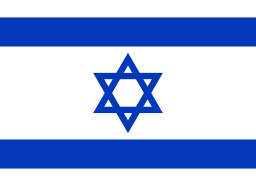
רחובות Coordinates: 31° 53' 52.67" N 34° 48' 29.24" E 
|
||

רחובות Coordinates: 31° 53' 52.67" N 34° 48' 29.24" E 
|
||
| Home | Maps | Links | Census |

Rehovot (Wide Expanses) Rehovot was established in 1890 by Polish Jewish immigrants. The land used for the town was purchased from a Christian Arab using funds provided by the Menuha Venahala Society, a Polish organization devoted to settling Jews in Eretz, Yisroel. The original Rehovot (Rehoboth), according to Genesis 26:22, was located in the Negev Desert. Modern Rehovot is situated on the coastal plain, twenty kilometers (12.4 miles) south of Tel Aviv.
Khirbat Deiran is an archeological site which is located within the precincts of Rehovot. Khirbat Deiran was populated as early as the Hellenic period, and remained an active community through the Roman and Byzantine periods and into the establishment of Islamic dominance. Excavation of the site, indicates that Jews were living in Khirbat Deiran during Roman rule.
The purchase of the land in 1890 that was to become Rehovot was not obtained without consequences. Local Arabs had been living on and using the area for generations, essentially as squatters who, nevertheless, considered the land as belonging to them; the Arabs' lifestyles and livelihoods were thus disrupted by the influx of the Polish Jews. Inevitably, in 1892, an argument over pasture rights broke out between the residents of Rehovot and their neighbors. This dispute was followed by another disagreement, in 1893, that resulted in Bedouins attacking Rehovot. Twenty years later a fatal conflict, involving gunfire, broke out over the theft of grapes.
The Jewish immigrants developed their newly purchased land, changing it from a wasteland to cultivated vineyards, almond orchards, and citrus groves. This effort was accompanied by the typical problems experienced by farmers — plant disease, agricultural failures. and difficulty in marketing their produce.
In 1908, new Jewish immigrants were sought as agricultural laborers. At that time, Yemenite immigrants had settled in Jerusalem and Jaffa. The Workman's Union — Hapoel Hazair — resettled about three-hundred Jaffa Yemenites in Rishon-le-Zion and Rehovot; only a few dozen Yemenite families settled in Rehovot. These people settled in a section of Rehovot that became known as Sha'araim. Two years later, in 1910, Yemenite Jews were recruited as agricultural workers; hundreds began arriving in Rehovot the following year.
Electricity first came to Rehovot (and to Rishon-le-Zion and Ness Ziona, as well) in 1924 when the British Army contracted with the Palestine Electric Company to extend power to military installations. The power company had the option of extending high-tension lines to Jewish towns.
An agricultural research center was opened in Rehovot in 1932. This research station later became Hebrew University's Department of Agriculture. Two years later, in 1934, Chaim Weizmann established the Sieff Institute, later renamed the Weizmann Institute of Science.
|
Please contact Leah Haber Gedalia with your additions, questions, corrections, or comments! webmaster: richard L. baum |
|
This page is hosted at no cost to the public by JewishGen, Inc., a non-profit corporation. If it has been useful to you, or if you are moved by the effort to preserve the memory of our lost communities, your JewishGen-erosity would be deeply appreciated. |
|
KehilaLinks Home |
JewishGen Home
|
Created: 25 June 2017
Last Modified: 05-20-2018
Copyright © 2017 Leah Gedalia
All Rights Reserved.